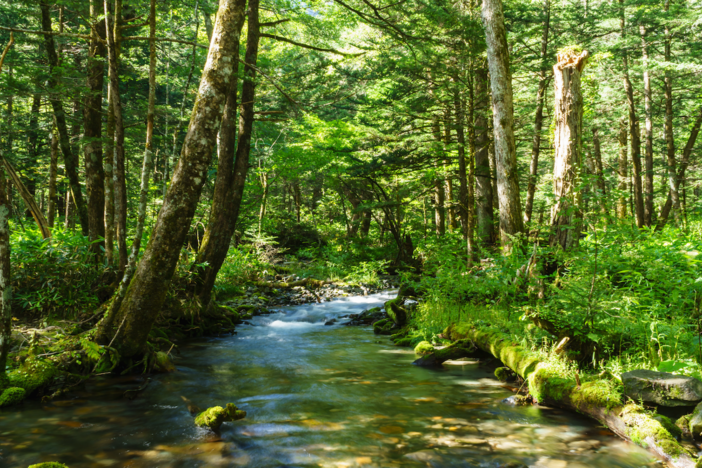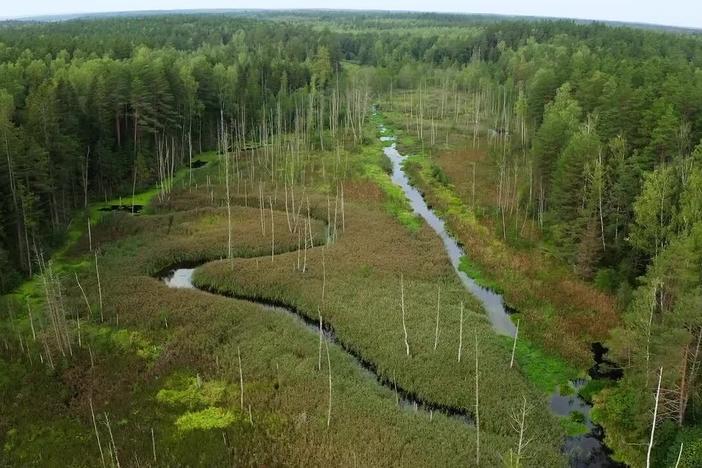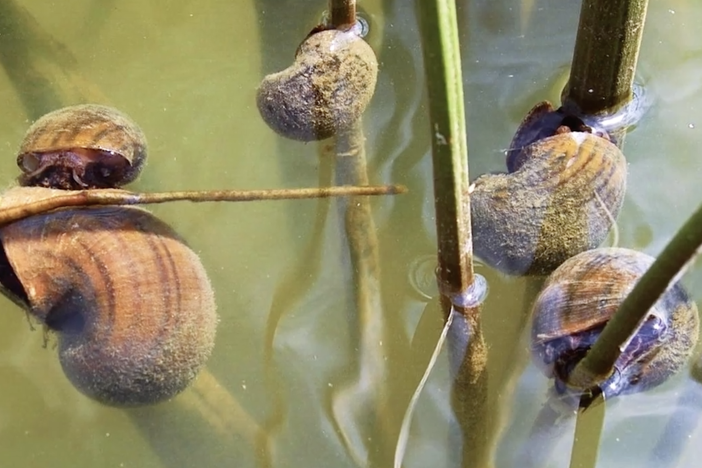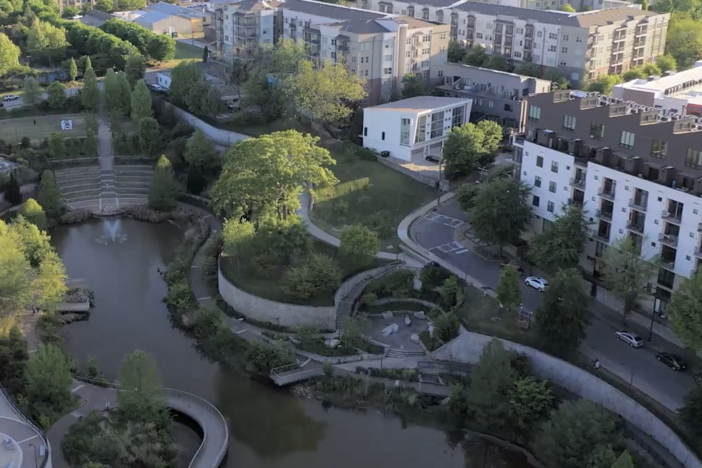Segment B: Investigation of an Aquatic Ecosystem
Have you ever wondered how you can help care for the ecosystems around you? Jump in with Raiany and Mike to test the chemical levels of a Georgia freshwater stream, and learn about the organisms that call it their home.
Segment B: Investigation of an Aquatic Ecosystem
There are many ways to help keep your community's ecosystems clean. In this segment of Let's Go Enviro, follow host Raiany Silva and watershed specialist Mike Kahle as they take a look at a local stream to test its levels of pollution.
Science
Develop and use a model to compare and analyze the levels of biological organization including organisms, populations, communities, ecosystems, and biosphere.
Evaluate claims, evidence, and reasoning of the relationship between the physical factors (e.g., insolation, proximity to coastline, topography) and organismal adaptations within terrestrial biomes.
Plan and carry out an investigation of how chemical and physical properties impact aquatic biomes in Georgia.
Explain the significance of a watershed.
Describe macroinvertebrates and how they can be bioindicators.
Describe the different levels of organization studied by ecologists.
Discuss how adaptation relates to a species’ survival.
Compare and contrast aquatic ecosystems in North Georgia vs South Georgia in terms of temperature and dissolved oxygen.
Describe the major aquatic ecosystems, including freshwater and marine.
abiotic: characterized by an absence of living organisms; without life
adaptation: in biology, the process of change in a living thing, over time, resulting in it being better able to survive and multiply
biodiversity: the variety of life in the world or in a particular habitat or ecosystem
biogeochemical cycle: any of the natural pathways by which essential elements of living matter are circulated
bioindicator: living organisms such as plants, planktons, animals, and microbes, which are utilized to analyze the health of the natural ecosystem in the environment
biome: a large naturally occurring community of flora and fauna occupying a major habitat, e.g. forest or tundra
biosphere: the regions of the surface, atmosphere, and hydrosphere of the earth (or analogous parts of other planets) occupied by living organisms
biotic: pertaining to life or living things
dissolved oxygen: the amount of oxygen available to living aquatic organisms
ecosystem: a community of living things, together with their environment
food chain: the order of events in an ecosystem, where one living organism eats another organism, and later that organism is consumed by another larger organism
macroinvertebrate: any animal lacking a backbone and large enough to see without the aid of a microscope
native species: a species that originated and developed in its surrounding habitat and has adapted to living in that particular environment
pollution-sensitive species: species that can only survive within a narrow range of environmental conditions and whose disappearance from an area is an index of pollution or other environmental change
pollution-tolerant species: species that can withstand a wider range of environmental conditions caused by pollution, including very low oxygen levels or high toxicity
tributary: a river or stream flowing into a larger river or lake
water cycle: the cycle of processes by which water circulates between the earth's oceans, atmosphere, and land, involving precipitation as rain and snow, drainage in streams and rivers, and return to the atmosphere by evaporation and transpiration
watershed: a land area that channels rainfall and snowmelt to creeks, streams, and rivers, and eventually to outflow points such as reservoirs, bays, and the ocean





